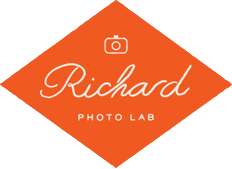How to Shoot a Test Roll
What’s the very first step in getting the best film photography images?
Shooting on a certain type of film? No.
Developing with a specific type of chemistry? Nope.
Using a particular scanner? Not that either.
Choosing the best photo lab? No, not even that.
The first step in getting better film images and better scans is to shoot a test roll.
What do you learn from shooting a test roll? Simply put, you find the best exposure. It’s not about “proper” exposure. It’s about finding out if YOU like more or less exposure in certain situations.
Beyond that, each photographer’s reasons might be different.
Novice photographers will want to shoot test rolls to get a fundamental and practical understanding of exposing film to their liking.
Experienced film photographers may want to shoot test rolls if they are trying out new film stocks, or shooting film in unfamiliar lighting situations. They also periodically just “recalibrate” over time as their shooting techniques evolve.
Remember that the tiniest difference in shooting methods from photog to photog, right down to how you hold your light meter, will affect the settings of your film camera. So you have to test exposures for yourself!

So how do you shoot a test roll?
It’s all about “bracketing”, the process of taking multiple shots of the same image at different exposures in order to determine which exposure setting achieves the look you want.
“Exposure” refers to the amount of light being taken in by the camera. Two settings determine the exposure: the aperture on your lens and the shutter speed.
When you are bracketing, you will only want to adjust ONE of these exposure variables while the other camera settings remain constant, but it doesn’t really matter which one you choose.
For our explanation of the process, we will talk about changing the aperture setting. It’s worth noting that in some cases you will be forced to adjust one setting over the other.
For example, the degrees of measurement of the aperture are called “f-stops” and they typically range from f/1.4 to f/16. The aperture range is completely dependent on the type of lens you use.
But if the starting aperture for your “base” exposure is already at the edge of this range, you may not be able to adjust the aperture as many stops as you need to in order to complete the bracketed test. In this case, you should adjust the exposure speed from shot to shot instead.
First, make sure your camera is on “manual” mode and all auto-functions are turned off. Use your light meter to determine the suggested exposure for the scene. Then, simply adjust your aperture settings in order to shoot a range of exposures of the same image (again, without changing your shutter speed), using the suggested exposure as your base.
The size of the increments and the number of extra shots you take is completely up to you, but Richard Photo Lab suggests adjusting your aperture between ½ and 1 full stop for each shot. And shooting at least three stops higher than, and three stops lower than, the suggested exposure (along with the suggested exposure itself). This will get the best range of exposures to consider.

It’s super important to take notes while you are shooting your test roll! You’ll need them to know which exposure settings correlate to which frames. And remember, don’t stop at just one bracket. Create a bracket for a myriad of subjects/scenes, lighting conditions, etc.
When you send your film to the lab to be processed and scanned, you’ll want to state that this is a bracketed test roll in the “special instructions”. Why? Richard’s scanning technicians typically scan film to get you the best looking scan possible for each frame, and for consistency across the roll of film.
But in the case of a test roll, you will want to get the “truest” scan possible in order to see how the exposure settings alone affect the appearance of the shot. So, we won't try to make your whole roll consistent. You won't see the same progression of dark to light in your scans like you will on your negatives. You’ll see the best possible scan that can be produced from that negative.
Once you receive your scans, you’ll first want to look at the digital images AND prints. Why both? Well, scans only tell half the story, because things like color and contrast can differ from screen to screen. This may not drastically affect your frame-by-frame comparison of exposure overall, but it will affect what you interpret to be your “ideal look”.
Prints are a sort of constant for what your work truly looks like—if you get a photographic proof print of an image today, our machines are calibrated and maintained to print that image with precise consistency in a year from now, and the year after that, and the year after that.
Beyond scans and prints, it’s your negatives that hold the answers to your exposure questions. Looking directly at the film and the density of the frames will give you a better understanding of what your negatives should look like in order to achieve the look you like.
Pick out your favorite scans/prints and then look at the negatives—if you want your shots to look a certain way, your negatives need to look a certain way! The easiest way to spot changes in exposure, from both shot-to-shot and scene-to-scene, is to look directly at your film.
Of course all those things we first mentioned, like the film type or the lab you choose, will influence the look of your images even further. Heck, the amount of tweaking in the scanning process alone could be the difference between a mediocre shot and an amazing one! But, those things can only compensate for so much inconsistency. It all starts with the fundamentals of film exposure and nailing down the best foundation to work from.
Start Your Film Order
